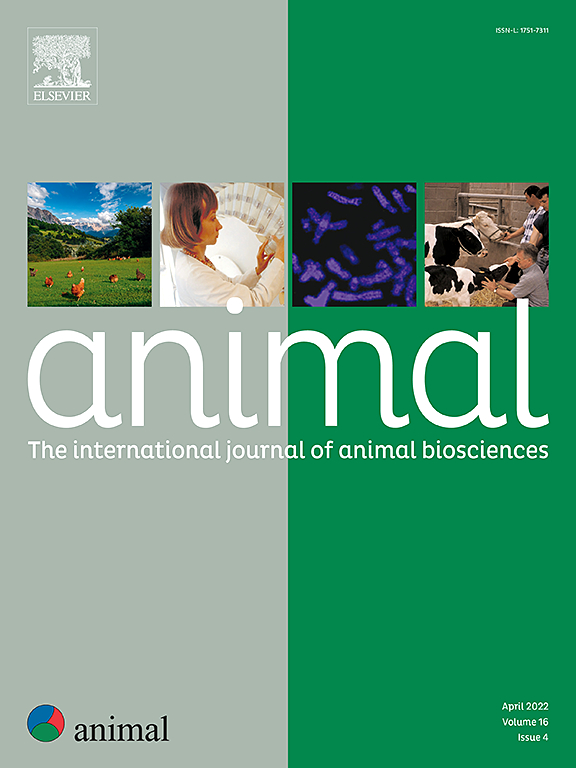Short communication: The importance of random effects in detecting purging of inbreeding depression: A model comparison in Pannon White rabbits
IF 4
2区 农林科学
Q1 AGRICULTURE, DAIRY & ANIMAL SCIENCE
引用次数: 0
Abstract
Inbreeding depression (ID) is a well-documented phenomenon associated with reduced fitness and possible extinction. However, ID can be mitigated or even eliminated through the interplay of inbreeding and selection, a process known as purging. The aim of this study was to compare the predictive power of two commonly used approaches in models with and without random dam effects to detect purging (full and reduced models). Specifically, we compared the full and reduced models based on the Kalinowski ancestral inbreeding coefficient (KAL) with the full and reduced inbreeding-purging (IP) models based on the purged inbreeding coefficient. Our analysis utilised kindling records from 1 379 Pannon rabbits born between 1992 and 1997. We modelled the effects of dam and litter inbreeding on kit survival at birth (zero/one), an important fitness trait, along with the effects of parity and the effects of kindling season. Random dam effects were only considered in the full KAL and IP models. We assessed the classification abilities (predictive power) of these models using Receiver Operating Characteristic (ROC) and Precision-Recall (PR) curves, where larger areas under the curve (AUC) indicate better classification performance. The full KAL model (AUC-ROC = 0.8156, AUC-PR = 0.9861) and the full IP model (AUC-ROC = 0.8152, AUC-PR = 0.9860), both of which include random dam effects, demonstrated high predictive power based on both methods. In contrast, the reduced KAL model (AUC-ROC = 0.5730, AUC-PR = 0.9553) and the reduced IP model (AUC-ROC = 0.5686, AUC-PR = 0.9546), which did not include random dam effects, had significantly lower AUC values. Based on our empirical results using the receiver ROC and PR curves, it could be concluded that the inclusion of random dam effects significantly increased the predictive power of the KAL and IP approaches. This finding has high importance as the inclusion of ’polygenic’ random effects is not standard - and possibly never applied - in the IP models, unlike in KAL models where their use is more common.
求助全文
约1分钟内获得全文
求助全文
来源期刊

Animal
农林科学-奶制品与动物科学
CiteScore
7.50
自引率
2.80%
发文量
246
审稿时长
3 months
期刊介绍:
Editorial board
animal attracts the best research in animal biology and animal systems from across the spectrum of the agricultural, biomedical, and environmental sciences. It is the central element in an exciting collaboration between the British Society of Animal Science (BSAS), Institut National de la Recherche Agronomique (INRA) and the European Federation of Animal Science (EAAP) and represents a merging of three scientific journals: Animal Science; Animal Research; Reproduction, Nutrition, Development. animal publishes original cutting-edge research, ''hot'' topics and horizon-scanning reviews on animal-related aspects of the life sciences at the molecular, cellular, organ, whole animal and production system levels. The main subject areas include: breeding and genetics; nutrition; physiology and functional biology of systems; behaviour, health and welfare; farming systems, environmental impact and climate change; product quality, human health and well-being. Animal models and papers dealing with the integration of research between these topics and their impact on the environment and people are particularly welcome.
 求助内容:
求助内容: 应助结果提醒方式:
应助结果提醒方式:


